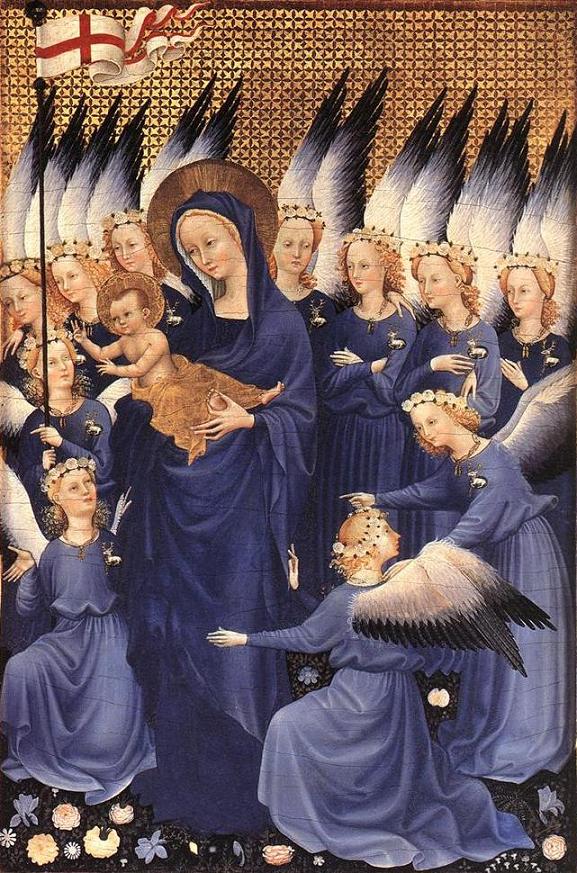
LIFE AS MYTH
![]()
JOURNAL
![]()
JOURNAL 2014
The poetics of grace
On shells and nests
![]()
![]()
LIFEWORKS
![]()
ATLAS
![]()

WINTER 2014
BLUE RADIANCE
Tibetan medicine buddha tangka (blue radiance and lapis bowl suggest Bhaishajyaguru), Artist and date unknown. Interior panel of Wilton Diptych. Artist unknown. Egg tempura on oak panels. 1395. The National Gallery, London.
In Western art, blue is the traditional choice when rendering the robes of the madonna. This practice may reflect the association of blue with divinity, piety, spirituality, and healing. However, there are other practical matters that contributed to the elevation of blue in Western visual art.
Blue pigment required a liberal amount of blu oltremare, also known as ultramarinum [beyond the sea], obtained from imported lapis lazuli. Popular with Italian painters in the fourteenth and fifteenth centuries, blu oltermare was also very expensive, at times exceeding gold in cost. The high cost of lapis-based pigment resulted in infrequent use and the distinguishing of any blue feature in a visual composition. The early painters reserved it almost exclusively for the highest divinities: the Virgin Mary and the Christ child.

